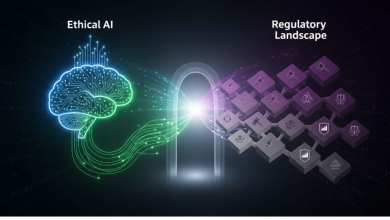Scaling Data Futures Beyond Servers
The landscape of data infrastructure is evolving rapidly, driven by the relentless expansion of data volumes and the increasing demand for instantaneous insights. Central to this evolution is the shift away from traditional server-centric models toward more dynamic, flexible approaches that redefine how data is stored, processed, and accessed. This transformation opens doors to innovative architectures centered on scalability, responsiveness, and cost efficiency—without tethering growth to fixed hardware limitations.
Amidst this transformative wave is the rise of serverless data engineering architectures, which blur the lines between infrastructure management and application development. These architectures empower organizations to build data systems that scale adaptively, responding instantaneously to varying computational needs. The power lies not just in abstraction from the server hardware but in unlocking agility that translates to business resilience and innovation speed.
The availability of a free cloud database option in various cloud ecosystems accelerates experimentation and democratizes access to powerful data tools, removing entry barriers for startups and enterprises alike. This accessibility fuels creative data solutions without requiring hefty upfront investments or ongoing infrastructure oversight, fostering a fertile ground for scalable innovation.
Transitioning beyond fixed servers also entails embracing microservices and modular design principles. Decoupling data workloads into smaller, independent functions enables granular scaling and enhanced fault tolerance. This modularity allows systems to grow organically, adapting to unprecedented workloads while minimizing resource waste. Real- time data processing, crucial for domains from financial services to IoT analytics, becomes feasible at scale through such innovations, enabling instantaneous decision-making and customer experiences.
Emerging trends also spotlight the convergence of serverless models with edge computing and AI integration. Shifting data processing closer to the source reduces latency and bandwidth demands, while AI-powered analytics at the edge usher in smarter, context- aware applications. These hybrid architectures weave together agility, speed, and intelligence, meeting the evolving needs of modern digital ecosystems.
Yet, scalability is not merely a technical challenge—it is strategic. Organizations must architect their data environments to anticipate growth without sacrificing performance or
security. This foresight includes adopting open standards and seamless interoperability, ensuring heterogeneous systems communicate fluidly and uphold robust governance. As distributed systems become more complex, safeguarding data privacy and integrity remains paramount, reinforcing trust and scalability.
Ultimately, the move beyond servers symbolizes more than technological progress; it heralds a philosophy of infrastructure as an adaptive service that scales effortlessly, operates transparently, and empowers users to focus on insights rather than upkeep. The promise of flexible, serverless data infrastructure coupled with the accessibility of a free cloud database redefines what is possible, democratizing innovation and setting the stage for data futures without bounds.




